

 The South African
The South African
On 1 February 1920, the Air Services of the Union Defence Force (later known as the South African Air Force) came into existence with Lt Col H P (Pierre) van Ryneveld, the first Director Air Services. The establishment of the South African Air Force was made possible largely due to a generous donation of about 100 aircraft and associated equipment from the British government. This included 48 DH9, 30 Avro 504 and 22 SE5 aircraft. The fledgeling air force's first facility, Zwartkop Air Station, came into being the following year. The South African Air Force was subsequently listed as a Permanent Force unit on 1 February 1923.
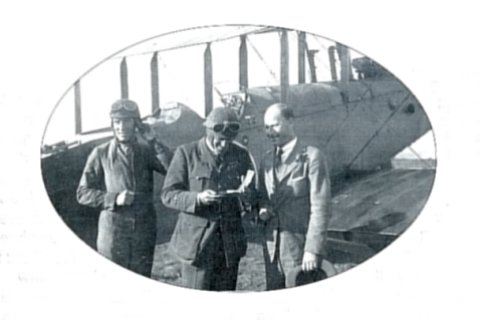
South African pioneering aviators Quintin Brand and Sir Pierre van Ryneveld with their DH9.
(Photo By courtesy: Ditsong National Museum of Military History Photographic Archives).
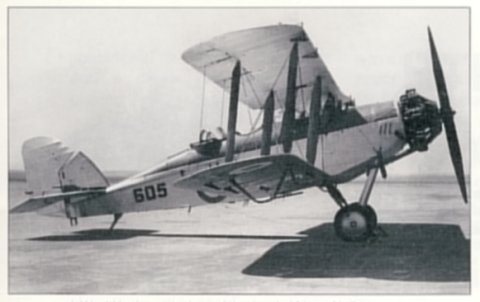
A Wapiti in the early days of the South African Air Force.
(Photo: By courtesy, Ditsong National Museum of Military History).
It was therefore appropriate that ninety years of service would be remembered as the Air Force gathered at the historic Swartkop airfield for the annual Air Force Day parade on 29 January 2010. The event, which was officiated by the Chief of the Air Force, Lt Gen Carlo Gagiano, was also attended by the Minister of Defence, Lindiwe Sisulu, and several other dignitaries, who included former Chiefs of the Air Force.
In his address, Lt Gen Gagiano highlighted the numerous successes and achievements attained during the past year. He alluded to the first delivery of the singe-seat Gripen C fighter aircraft to the Air Force at 2 Squadron and the successful integration of weapon systems. The support rendered during the Confederation Cup and other humanitarian interventions across the country as well as to the United Nations peacekeeping initiatives across Africa were praised by the CAF. Lt Gen Gagiano, however, also pointed to the number of challenges facing the SAAF. The exodus of scarce skills as pilots and technicians left the Air Force and a severely limited budget to maintain operational commitments were lamented by the Chief of the Air Force.
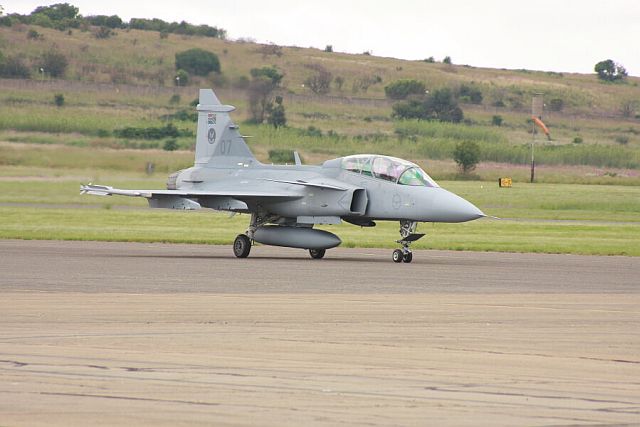
A Gripen D Fighter lands at Swartkop (Photo: By courtesy, SAAF).
With the Air Force Band in attendance and Squadron and Unit Colours proudly displayed, the parade also saw members of the SAAF sporting the new short-sleeve tunic summer uniform for the first time. It was generally well received, especially by those on parade.
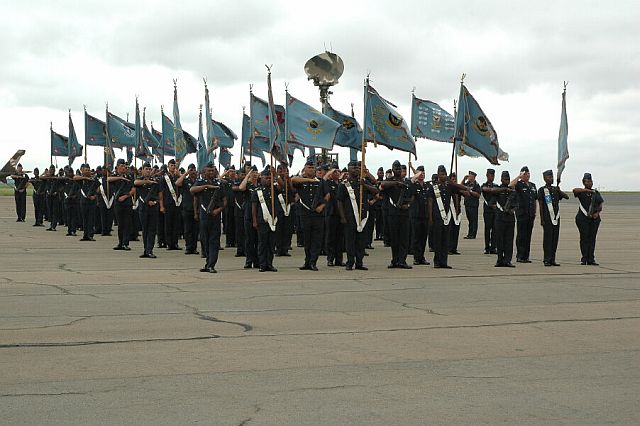
The South African Air Force Colour Parade (Photo By courtesy, South African Air Force).
The SAAF's bigger involvement in South Africa in 2010 to successfully host the soccer world cup was aptly demonstrated to the invited guests and press in attendance at the conclusion of the Air Force Day Parade. During this demonstration, a 'hostile civilian aircraft' that entered controlled air space without the necessary authority was dramatically intercepted by a Gripen fighter aircraft from 2 Squadron, and forced to land promptly at Swartkop. The South African Police Service Task Force spectacularly descended onto the airfield, courtesy of a C-130 transport aircraft from 28 Squadron and Oryx and Augusta helicopters from 17 Squadron. The hostile aircraft with its doubtful content was hastily surrounded and seized by the security forces, much to the delight of the Minister and other guests in attendance. Ninety years of selfless service to the country and beyond that, was aptly honoured when the Chief of the Air Force presented the members on parade with the Air Force's motto for 2010: 'Times change, but our commitment does not'.
Per Aspera Ad Astra
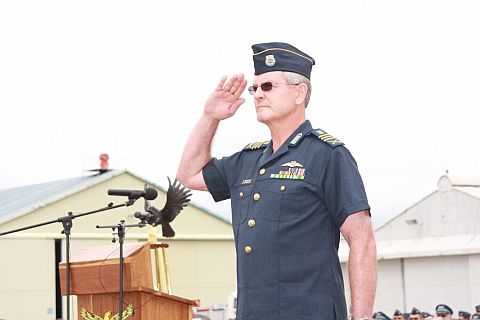
Lt Gen Carlo Gagiano, current Chief of the South African Air Force, takes the salute.
(Photo: By courtesy, South African Air Force).
Return to Journal Index OR Society's Home page
South African Military History Society / scribe@samilitaryhistory.org